Hyundai i10 vs VW Golf Variant – Differences & prices compared
Compare performance, boot space, consumption and price in one view.
Find out now: which car is the better choice for you – Hyundai i10 or VW Golf Variant?
The Hyundai i10 (Hatchback) comes with a Petrol engine and Manuel or Automatic transmission. In comparison, the VW Golf Variant (Estate) features a Petrol MHEV, Petrol or Diesel engine with Automatic or Manuel transmission.
When it comes to boot capacity, the Hyundai i10 offers 252 L, while the VW Golf Variant provides 611 L – depending on how much space you need. If you’re looking for more power, decide whether the 90 HP of the Hyundai i10 or the 333 HP of the VW Golf Variant suits your needs better.
In terms of consumption, the values are 4.90 L per 100 km for the Hyundai i10, and 4.30 L for the VW Golf Variant.
Price-wise, the Hyundai i10 starts at 14600 £, while the VW Golf Variant is available from 25200 £. Compare all the details and find out which model fits your lifestyle best!
Hyundai i10
The Hyundai i10 impresses with its compact design, making it an ideal choice for navigating through busy urban environments. Its interior is surprisingly spacious, offering drivers and passengers comfort beyond what one might expect from a city car. The model combines efficiency and practicality, making it an attractive option for those seeking both economy and functionality in their daily commute.
details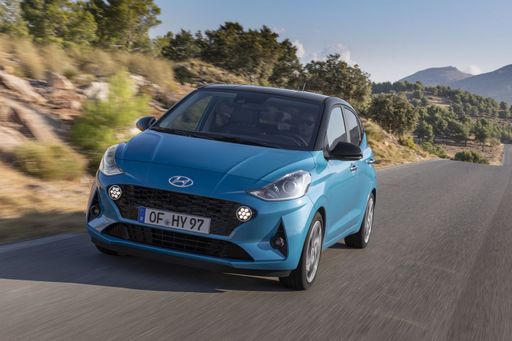 @ hyundai.news
@ hyundai.news
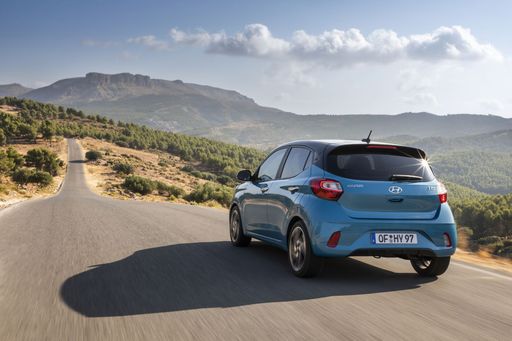 @ hyundai.news
@ hyundai.news
 @ hyundai.news
@ hyundai.news
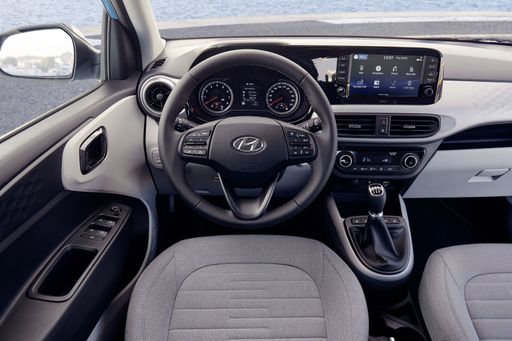 @ hyundai.news
@ hyundai.news
 @ hyundai.news
@ hyundai.news
VW Golf Variant
The VW Golf Variant represents a seamless blend of practicality and style, catering to drivers who require extra space without compromising on aesthetics. Its refined design and spacious interior make it an ideal choice for families and individuals with an active lifestyle. With advanced technology and a smooth driving experience, this estate car continues to impress within its class.
details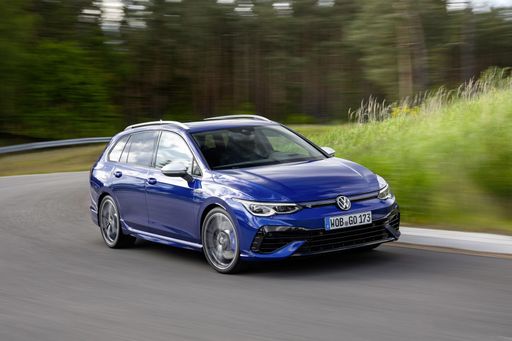 @ Volkswagen
@ Volkswagen
 @ Volkswagen
@ Volkswagen
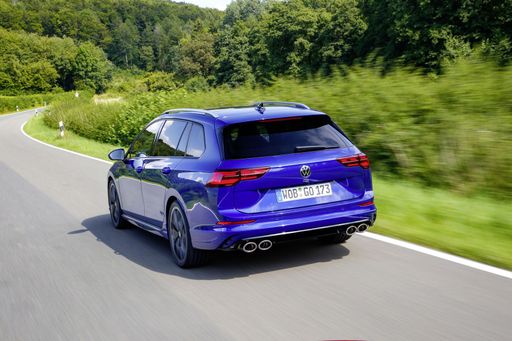 @ Volkswagen
@ Volkswagen
 @ Volkswagen
@ Volkswagen
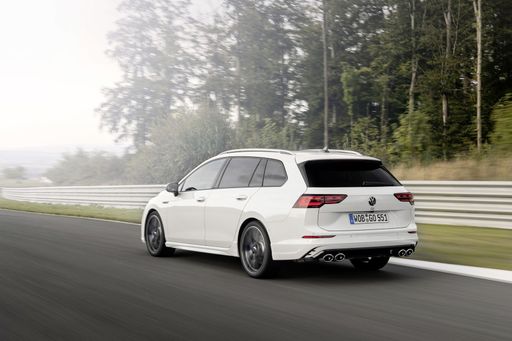 @ Volkswagen
@ Volkswagen
 @ Volkswagen
@ Volkswagen
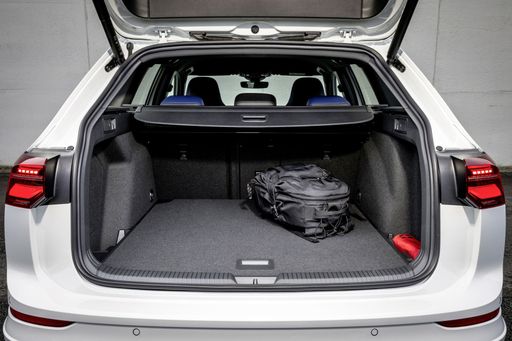 @ Volkswagen
@ Volkswagen

|

|
|
|
|
Costs and Consumption |
|
|---|---|
|
Price
14600 - 19000 £
|
Price
25200 - 48200 £
|
|
Consumption L/100km
4.9 - 5.5 L
|
Consumption L/100km
4.3 - 8.2 L
|
|
Consumption kWh/100km
-
|
Consumption kWh/100km
-
|
|
Electric Range
-
|
Electric Range
-
|
|
Battery Capacity
-
|
Battery Capacity
-
|
|
co2
110 - 124 g/km
|
co2
114 - 185 g/km
|
|
Fuel tank capacity
36 L
|
Fuel tank capacity
45 - 55 L
|
Dimensions and Body |
|
|---|---|
|
Body Type
Hatchback
|
Body Type
Estate
|
|
Seats
4 - 5
|
Seats
5
|
|
Doors
5
|
Doors
5
|
|
Curb weight
996 - 1099 kg
|
Curb weight
1366 - 1621 kg
|
|
Trunk capacity
252 L
|
Trunk capacity
611 L
|
|
Length
3670 - 3675 mm
|
Length
4631 - 4651 mm
|
|
Width
1680 mm
|
Width
1789 mm
|
|
Height
1480 - 1483 mm
|
Height
1462 - 1487 mm
|
|
Payload
344 - 423 kg
|
Payload
489 - 547 kg
|
Engine and Performance |
|
|---|---|
|
Engine Type
Petrol
|
Engine Type
Petrol MHEV, Petrol, Diesel
|
|
Transmission
Manuel, Automatic
|
Transmission
Automatic, Manuel
|
|
Transmission Detail
Manual Gearbox, Automated Manual
|
Transmission Detail
Dual-Clutch Automatic, Manual Gearbox
|
|
Drive Type
Front-Wheel Drive
|
Drive Type
Front-Wheel Drive, All-Wheel Drive
|
|
Power HP
63 - 90 HP
|
Power HP
116 - 333 HP
|
|
Acceleration 0-100km/h
11.4 - 18.4 s
|
Acceleration 0-100km/h
4.8 - 10.5 s
|
|
Max Speed
143 - 175 km/h
|
Max Speed
202 - 250 km/h
|
|
Torque
93 - 172 Nm
|
Torque
220 - 420 Nm
|
|
Number of Cylinders
3 - 4
|
Number of Cylinders
4
|
|
Power kW
46 - 66 kW
|
Power kW
85 - 245 kW
|
|
Engine capacity
998 - 1197 cm3
|
Engine capacity
1498 - 1984 cm3
|
General |
|
|---|---|
|
Model Year
2024
|
Model Year
2024 - 2025
|
|
CO2 Efficiency Class
C, D
|
CO2 Efficiency Class
D, C, G, F
|
|
Brand
Hyundai
|
Brand
VW
|
Hyundai i10
Introduction to the Hyundai i10
The Hyundai i10 has consistently proven to be a dependable and stylish companion for urban driving. Known for its compact design and efficiency, this hatchback offers a perfect blend of modern aesthetics and practicality, making it a popular choice for city dwellers and small families alike.
Performance and Efficiency
The Hyundai i10 is available with both manual and automatic transmissions, catering to various driving preferences. Engine power ranges from 63 to 90 PS, providing a versatile driving experience for both novice and seasoned drivers. The fuel consumption varies between an impressive 4.9 to 5.4 litres per 100 kilometres, fitting for those looking to minimise fuel costs while also reducing their carbon footprint.
Engine and Transmission
Equipped with a choice of 1.0-litre or 1.2-litre engines, the i10 offers up to 172 Nm of torque, ensuring lively performance. The models feature front-wheel-drive configurations, allowing for smooth handling and reliable road performance. The car excels in city driving but is equally capable on longer journeys.
Interior and Comfort
Despite its compact size, the Hyundai i10 does not compromise on interior space and comfort. It accommodates four to five occupants comfortably, offering sufficient legroom and headroom. Its flexible seating arrangement and a 252-litre boot make it ideal for both quick trips and weekend getaways.
Safety and Technology
Safety remains a priority with Hyundai, and the i10 is no exception. It comes equipped with multiple airbags, stability control, and advanced braking systems. Technology-wise, the i10 features a user-friendly infotainment system with smartphone connectivity, ensuring a pleasant and connected drive.
Design and Style
The Hyundai i10’s design is both modern and sleek, making it stand out in the compact hatchback segment. With a length ranging from 3670 to 3675 mm, a width of 1680 mm, and a height of 1480 to 1483 mm, the i10 strikes a perfect balance between style and functionality.
Affordable Pricing and Value
The i10 is available in several trims including the Select, N Line, and Prime, among others, with prices ranging from €16,990 to €22,190. Considering its features and low running costs — with monthly expenses estimated between €694 to €793 — the Hyundai i10 offers substantial value for those seeking an economical yet stylish hatchback.
Conclusion
The Hyundai i10 combines efficiency, modern design, and practicality in a compact package. Whether you are seeking a reliable city car or an economical daily driver, the Hyundai i10 is a strong contender worth considering in the compact car market of 2024.
VW Golf Variant
The Versatile Allure of the VW Golf Variant
The VW Golf Variant continues to solidify its place in the automotive world as a resourceful and reliable estate car, sweeping across European roads with its sleek design and robust engineering. In the 2024 model year, VW introduces a range of technical enhancements and innovative features that elevate this standard bearer of practicality and performance.
Powertrains: Efficiency Meets Performance
Under the bonnet, the VW Golf Variant offers an impressive variety of powertrains designed to satisfy varying needs and driving conditions. From the refined 1.5 TSI petrol engines, available in manual and dual-clutch automatic transmission options, to the fuel-sipping 2.0 TDI diesel variants, the Golf Variant aims to strike a balance between performance and economy. Petrol mild-hybrid configurations further enhance efficiency, offering a smart blend of power delivery and reduced CO2 emissions.
Engine Specifications and Fuel Consumption
The power range spans from 116 PS in the entry-level models up to a robust 333 PS in the Volkswagen Golf Variant R, catering to those with a craving for speed and agility. Fuel consumption varies according to engine choice, starting as low as 4.4 L/100km for the efficient diesel models. Such performance is complemented with low CO2 emissions, aligning the vehicle with modern environmental standards.
Innovative Features and Technology
VW’s iconic estate car thrives on technology-driven advancements. With seamless integration of an advanced infotainment system and digital cockpit, driving becomes both intuitive and enjoyable. The variety of safety features, such as adaptive cruise control and lane-keeping assist, ensure confidence behind the wheel. Embracing a future-forward approach, the mild-hybrid variants introduce energy recuperation systems that optimise fuel usage, showcasing VW's commitment to sustainability.
Interior Comfort and Practicality
The VW Golf Variant is synonymous with comfort and spaciousness. With a commodious boot space of 611 litres, it accommodates families and professionals alike, making it an ideal choice for long journeys and everyday errands. High-quality materials adorn the interior, providing drivers and passengers with a sophisticated and comfortable environment.
Performance and Driving Dynamics
Driving enthusiasts will appreciate the Variant’s dynamic handling, facilitated by an array of engine choices and drivetrain configurations. Whether it's the front-wheel-drive versions that offer exceptional maneuverability or the 4MOTION all-wheel-drive option in the R variant providing enhanced traction, the Golf Variant promises an engaging driving experience.
Conclusion: A Staple for Modern Motoring
The 2024 VW Golf Variant stands as a testament to VW's legacy of developing cars that combine practicality, performance, and cutting-edge technology. Whether it is serving as a family car or a dynamic commuter, its various configurations ensure that it remains a formidable choice for a wide array of drivers.
Which drive types are available for the Hyundai i10?
Available as Front-Wheel Drive.
The prices and data displayed are estimates based on German list prices and may vary by country. This information is not legally binding.
